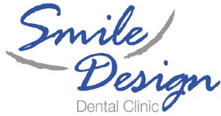Dental crowns are restorations that protect damaged, cracked or broken down teeth. A crown strengthens your existing damaged tooth so as to preserve its functionality.
Dental crowns are also commonly known as caps because a crown sits over your existing tooth covering the entire outer surface analogous to how a baseball cap would cover your head.
Crowns should not be the first treatment of choice just to improve the aesthetics of your teeth, because a dentist needs to grind a significant portion of the original tooth away. Less invasive alternatives include veneers or dental bonding. Crowns are required when the strength of the tooth supporting the restoration is compromised since veneers and dental bonding restorations are only as strong as the supporting tooth.
In modern day dentistry there is a wide variety of dental materials to choose from. Some crowns are made from full gold, where as others are made from an alloy of metals fused to a porcelain outer shell. After time, crowns and veneers that are made from a combination of metal fused to porcelain can begin to show dark gum lines that are not aesthetically attractive. All porcelain or ceramic crowns or veneers are the best choice for a natural cosmetic look. There are many different brands and types of porcelain crowns and the variation between the costs of dental crowns at different dental practices may well reflect the quality of the materials used.
Process:
Sometimes teeth are lost.
The adjacent teeth are prepared.
A Bridge is made which exactly matches the space …
… and is fitted across the gap.
Sometimes the most sensitive way to fill a gap …
… is to utilise fillings that already exist in adjacent teeth.
These fillings are removed and matching ‘wings’ attached to the bridge …
… which fit into the spaces.
What kind of tooth whitening is available?
There are two forms of teeth whitening one which involves a kit that you take home and the other involves an in house treatment. The one hour “zoom” laser treatment is the quickest and most effective treatment available and can only be carried out by a dentist. The procedure has been featured numerous times on “extreme makeovers” and can bring your teeth up to eight shades lighter. This affordable treatment is non-invasive and in some cases can be more effectual than veneers.
Who may benefit from tooth whitening?
Almost anyone. However, treatment may not be as effective for some as others. Your dentist can determine if you are a viable candidate for this procedure through a detailed oral exam, including a shade assessment.
Is whitening safe? Yes. Extensive research and clinical studies indicate that whitening teeth under the supervision of a dentist is safe. In fact, many dentists consider whitening the safest cosmetic dental procedure available. As with any tooth whitening product, zoom! Is not recommended for children under 16 years of age and pregnant or lactating women.
How long do the results last?
By following some simple post whitening care instructions, your teeth will always be lighter than they were before. To keep your teeth looking their best, we recommend flossing, brushing twice daily, and occasional touch-ups with the whitening gel. These are professional formula products designed specifically to keep your teeth their brightest. They are available only through your dentist.
Process:
One of the methods for whitening teeth uses a ‘tray’.
First of all, impressions are taken …
… from which a study model is made.
This is painted with a special material …
… which increases the thickness of the tooth area.
When the tray is prepared, a small pocket is produced.
The whitening solution occupies this pocket …
… ensuring that it only comes into contact with the required surfaces …
… and that no damage is done to the soft gums.
Before applying tooth whitening gel …
… the gums need to be protected.
A potective barrier is applied and hardened using a bright light.
The whitening gel is then applied …
… and activated using a bright light.
The gel will stay on the teeth for some time.
This is then washed away and the barrier removed.
Leaving bright, white teeth.
